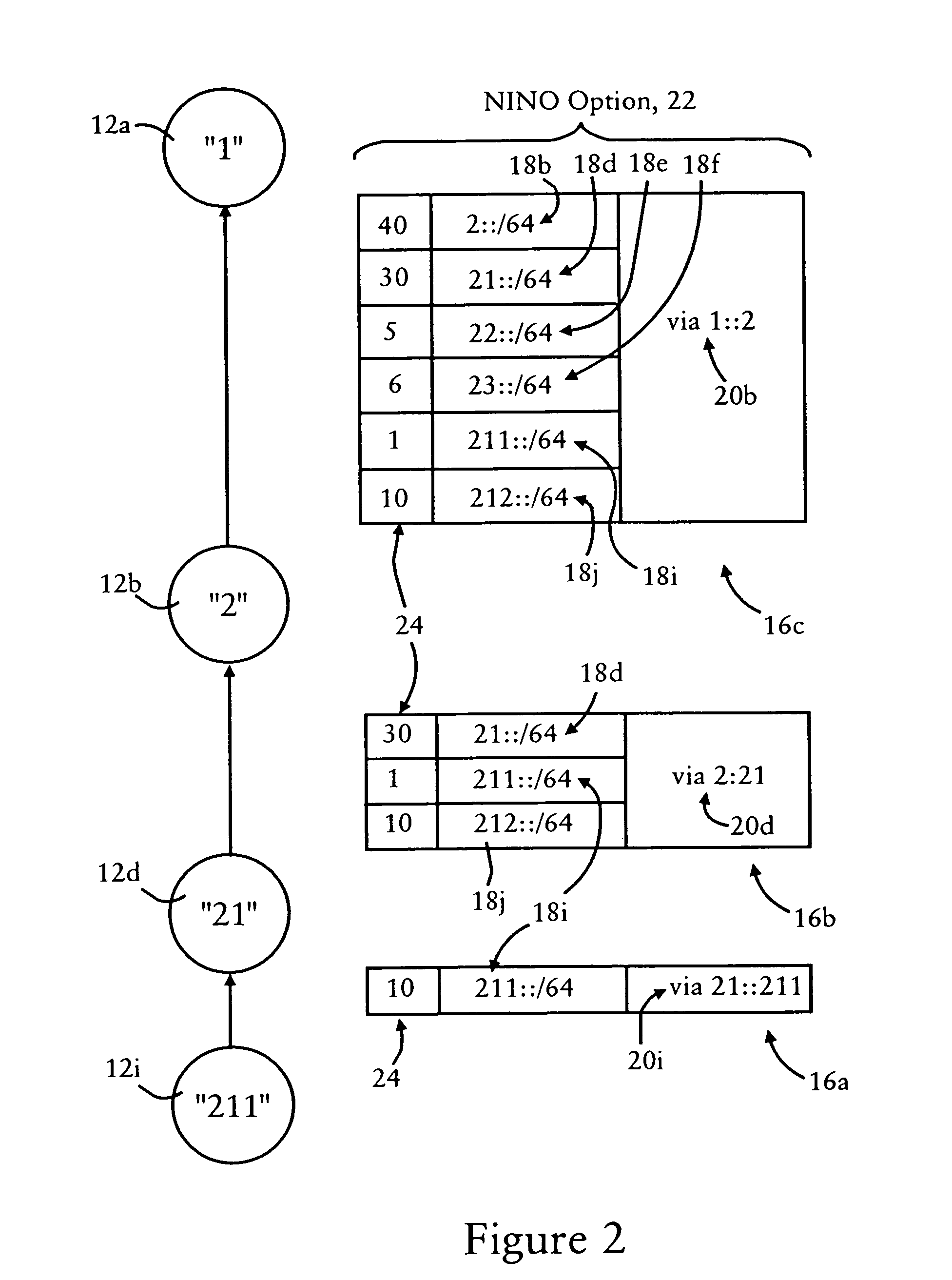Arrangement for providing optimized connections between peer routers in a tree-based ad hoc mobile network
a peer router and routing protocol technology, applied in the field of routing protocols for the establishment of an ad hoc mobile network, can solve the problems of deteriorating the ability of the tree-based network topology to rapidly converge or adjust, and achieve the effect of preventing congestion in the clusterhead and reducing the necessity of network traffic passing
- Summary
- Abstract
- Description
- Claims
- Application Information
AI Technical Summary
Benefits of technology
Problems solved by technology
Method used
Image
Examples
Embodiment Construction
[0032]The disclosed embodiment is considered an improvement over the tree-based ad hoc network described in the above-incorporated application Ser. No. 10 / 856,809, in that peer links are selectively utilized between peer routers that enable the clusterhead to be bypassed. As described below, the routing protocols used to share routing information between the peer routers is isolated from the propagation of neighbor advertisement messages, ensuring that no additional processing burden is imposed on the established tree.
[0033]Hence, connections between the mobile routers in the ad hoc tree are optimized without adversely affecting convergence of the tree due to, for example, movement within the tree.
[0034]FIG. 1 is a diagram illustrating a mobile ad hoc network 10 formed by mobile routers 12 serving as at least one of an attached mobile router and an attachment mobile router. The mobile routers 12 and any mobile hosts (not shown) initially establish link layer connectivity between eac...
PUM
 Login to View More
Login to View More Abstract
Description
Claims
Application Information
 Login to View More
Login to View More - R&D
- Intellectual Property
- Life Sciences
- Materials
- Tech Scout
- Unparalleled Data Quality
- Higher Quality Content
- 60% Fewer Hallucinations
Browse by: Latest US Patents, China's latest patents, Technical Efficacy Thesaurus, Application Domain, Technology Topic, Popular Technical Reports.
© 2025 PatSnap. All rights reserved.Legal|Privacy policy|Modern Slavery Act Transparency Statement|Sitemap|About US| Contact US: help@patsnap.com



